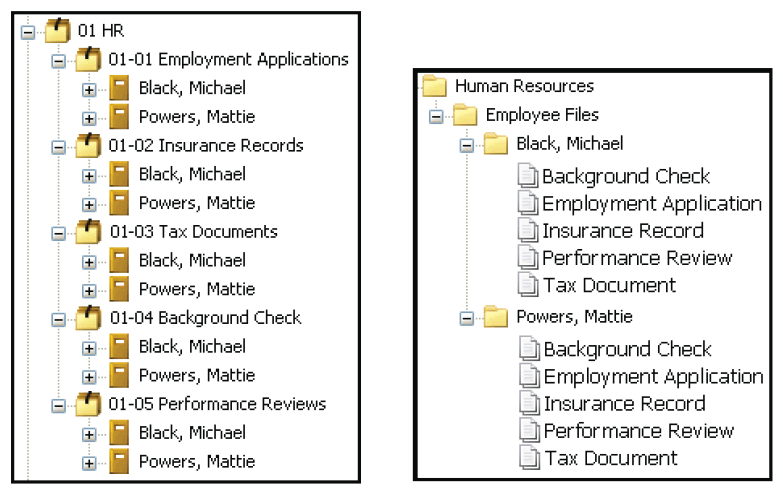How to Make HR Records Management Way Easier
Here on the ECM Blog, we talk a lot about the roles and responsibilities of records managers—but not all organizations actually have records managers. In the case of human resources (HR), maintaining employee records often falls on the HR department itself.
HR professionals shouldn’t spend too much time acting as records managers, yet it’s crucial to comply with government and company policies regarding employee files. How can HR professionals balance compliance with the core responsibilities of HR? The key lies in three words: Transparent Records Management.
Here’s why managing employee records is difficult and how Transparent Records Management can be used in organizations without a dedicated records manager.
The Challenge of HR Records Management
Records management is the practice of filing, retaining and destroying company records in accordance with government and industry regulations.
The challenge is that most employees aren’t thinking in terms of records management when they create and use documents. Regular employees organize documents based on their daily needs, not the rules of retention and destruction set forth by the IRS, state governments and so on.
For example, an HR professional might prefer to organize her files by employee name. She creates a new folder for each new employee and keeps it in a file cabinet. But within each employee’s file is a mixture of documents—each with different records management requirements. Imagine how time-consuming it would be to search through every employee file for W4s during tax season or manually locate records that are ready for disposition.
A first step toward better records management is implementing enterprise content management (ECM) software, which allows organizations to store records in an electronic repository. This solves the problem of manually sifting through cabinets of employee files, but it does not change the way an HR professional organizes employee files—arranging them by employee name is still the most logical approach for an HR professional. Fortunately, there’s a way to retain this file structure and still make records management easier for HR.
Transparent Records Management to the Rescue
Transparent Records Management allows the same ECM repository to be viewed in two different ways. For HR, one view can display employee records by employee name while a second view displays employee records by record type: applications, insurance documents, tax documents and so forth.

This ability to arrange the same repository of employee files in two different ways is key to efficient HR records management. Regular HR employees can access a folder structure relevant to their jobs while a designated HR administrator sees a folder structure designed for records management.
The important thing to remember here is that transparent records management provides two views of the same repository, not two separate repositories. The “regular” view actually contains shortcuts to the original documents. This means that if a document is edited in the “regular” view of the HR repository, that change is reflected in the “records management” view as well—sort of like The Matrix. This function of transparent records management prevents unnecessary duplication of documents and ensures information consistency.
If you’re interested in learning how HR processes can be automated, check out our free eBook on HR automation.


